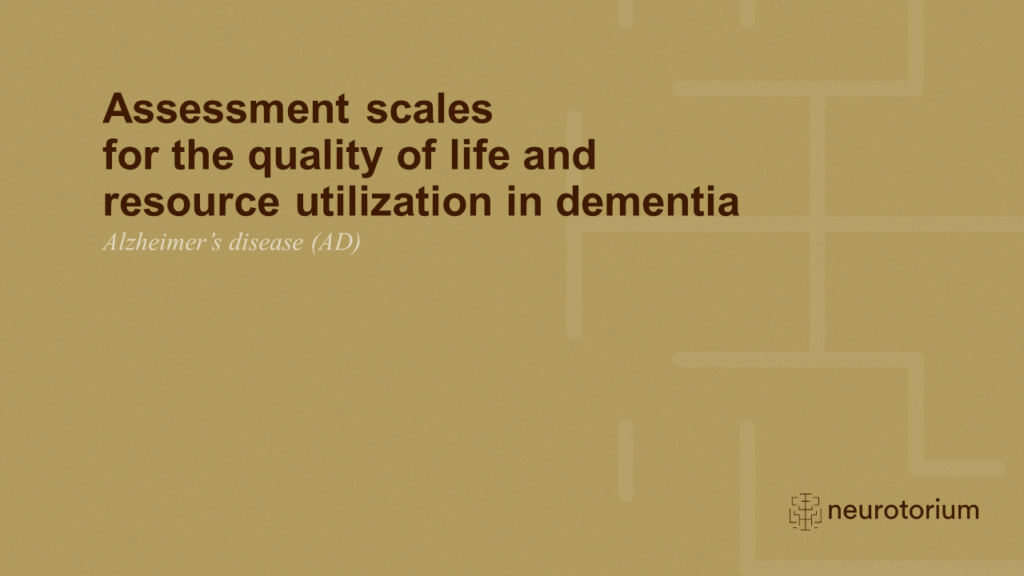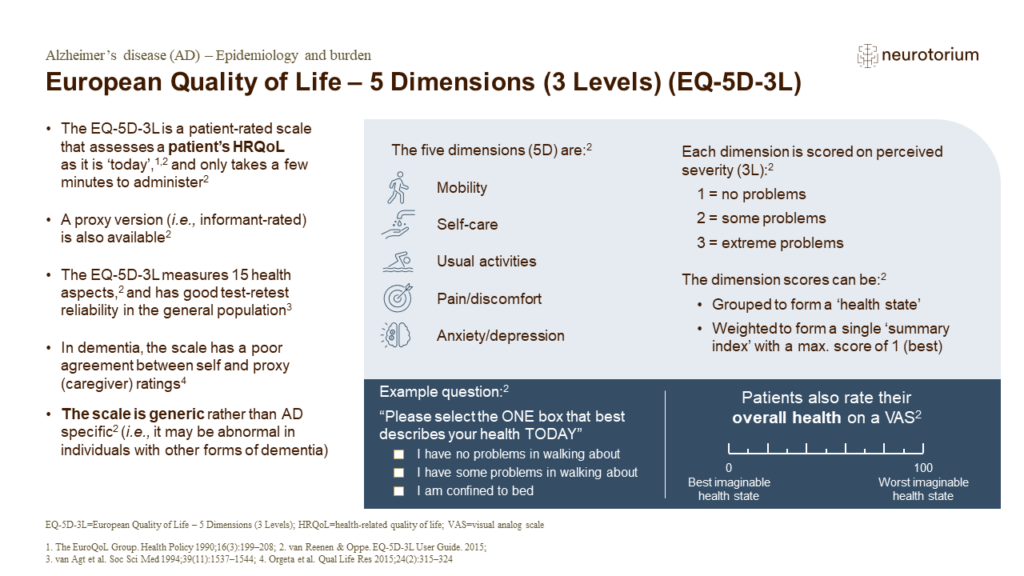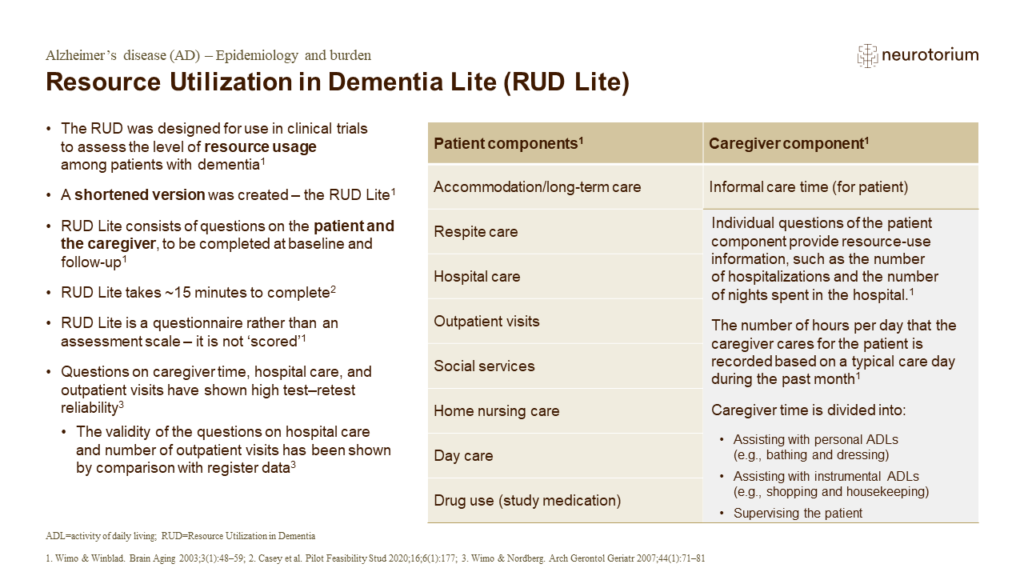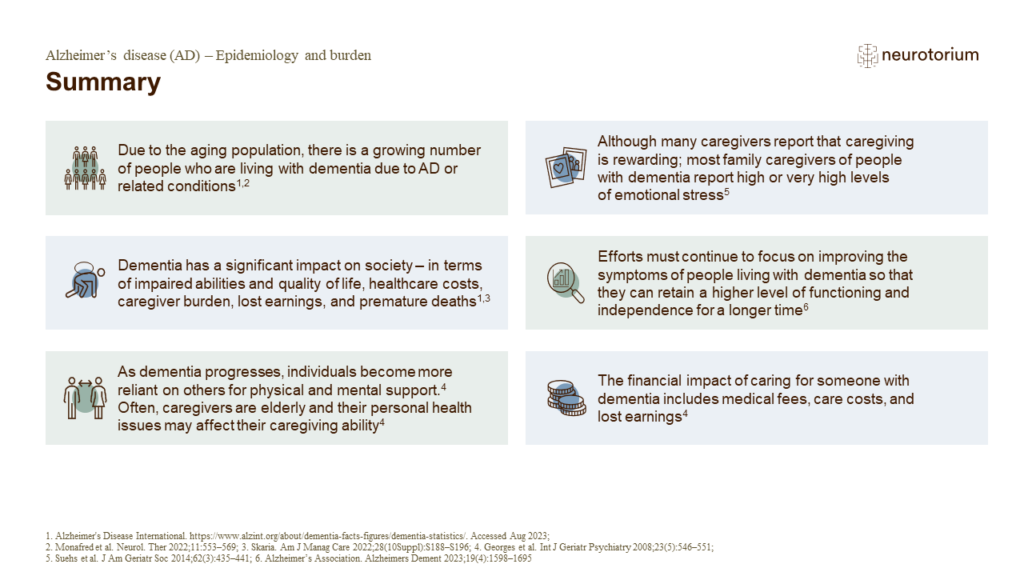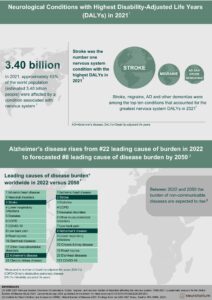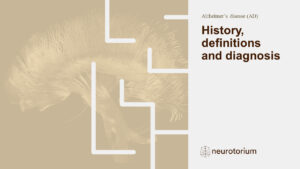Index for
slide deck
Introduction
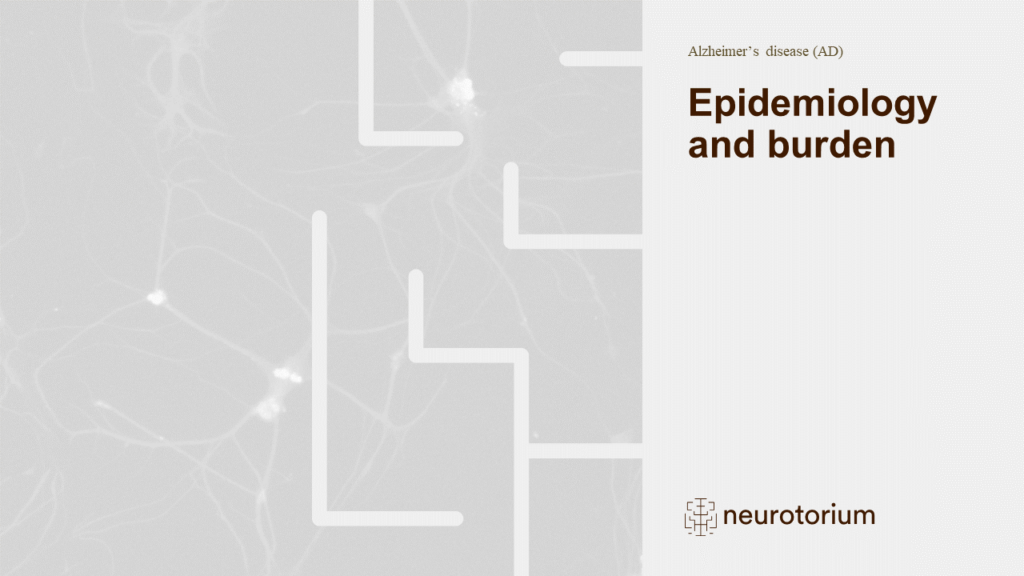
Epidemiology and burden
Prevalence of dementia
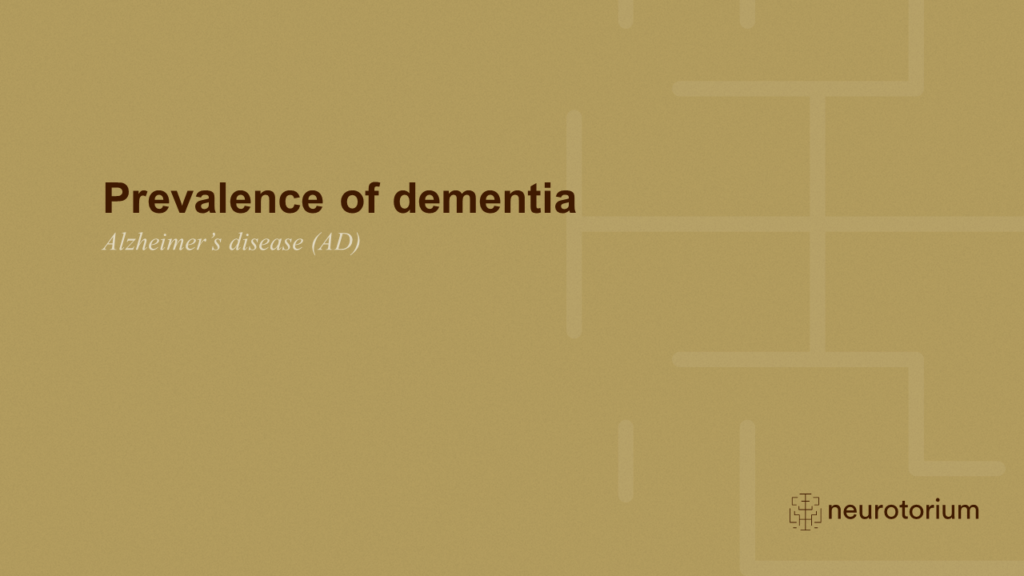
Prevalence of dementia
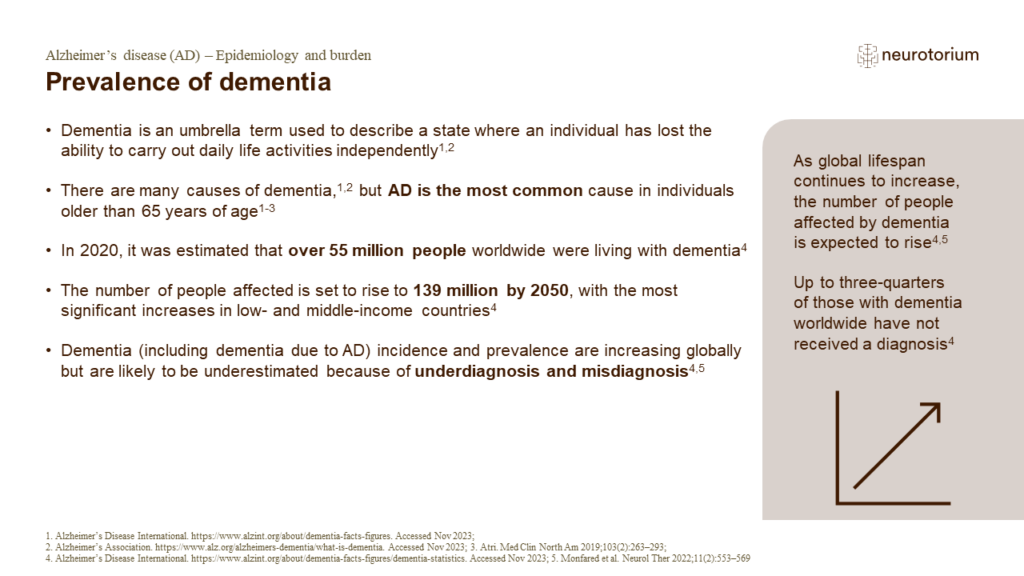
Prevalence of dementia
References:
1. Alzheimer’s Disease International. Dementia facts and figures. Available at: https://www.alzint.org/about/dementia-facts-figures/. Accessed 2 November 2023.
2. Alzheimer’s Association. What is dementia? Available at: https://www.alz.org/alzheimers-dementia/w…
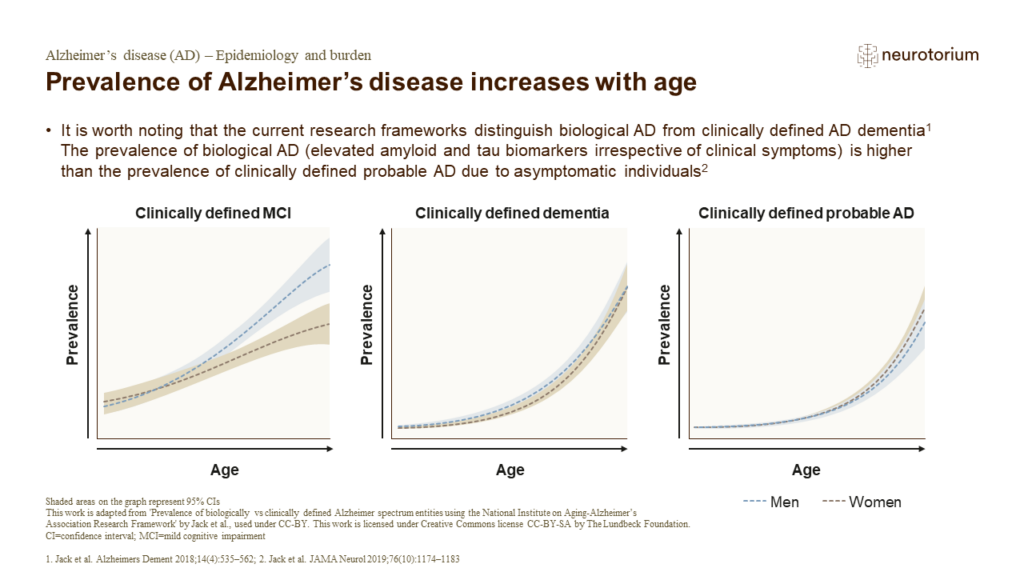
Prevalence of Alzheimer’s disease increases with age
The National Institute on Aging-Alzheimer’s Association (NIA-AA) workgroup recently published a research framework which defined AD by neuropathological or biomarker evidence of amyloid-b plaques and tau tangles, rather than clinical symptoms.1 They then aimed to address …
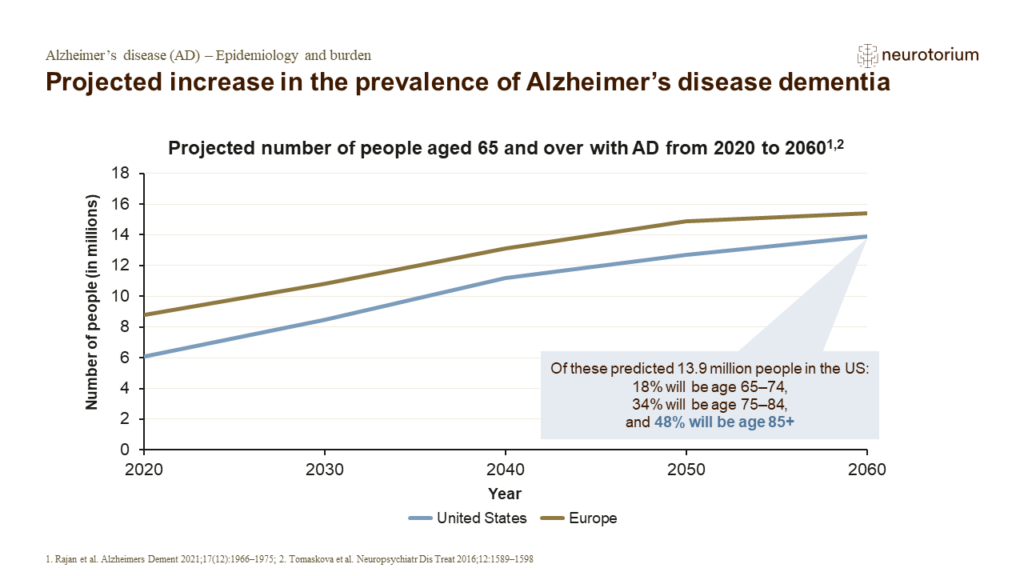
Projected increase in the prevalence of Alzheimer’s disease dementia
In 2011, the largest ever demographic generation in the US, known as the baby-boom generation, started to reach age 65.3 As a result of this generation, the number of Americans aged 85 and above is expected to dramatically increase over the coming years.4 Additionally, th…
Burden of AD
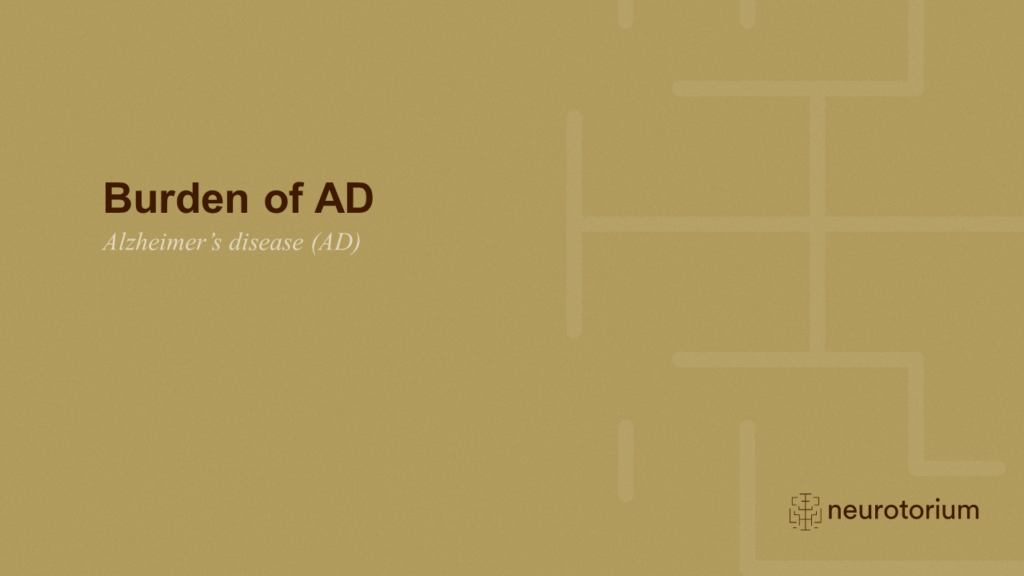
Burden of AD
People living with dementia live with the disease for a long time, and therefore, spend a long time living with disability and depending on caregivers.2 As a result, this significantly contributes to the public health impact of the disease.2,5 Cost of care can be divided …
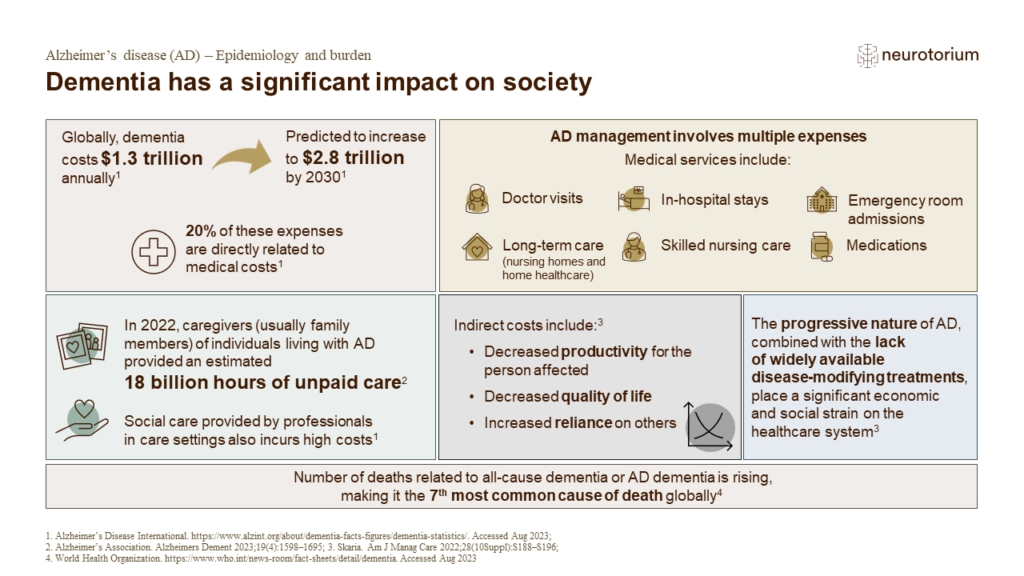
Dementia has a significant impact on society
People living with dementia live with the disease for a long time, and therefore, spend a long time living with disability and depending on caregivers.2 As a result, this significantly contributes to the public health impact of the disease.2,5 Cost of care can be divided …
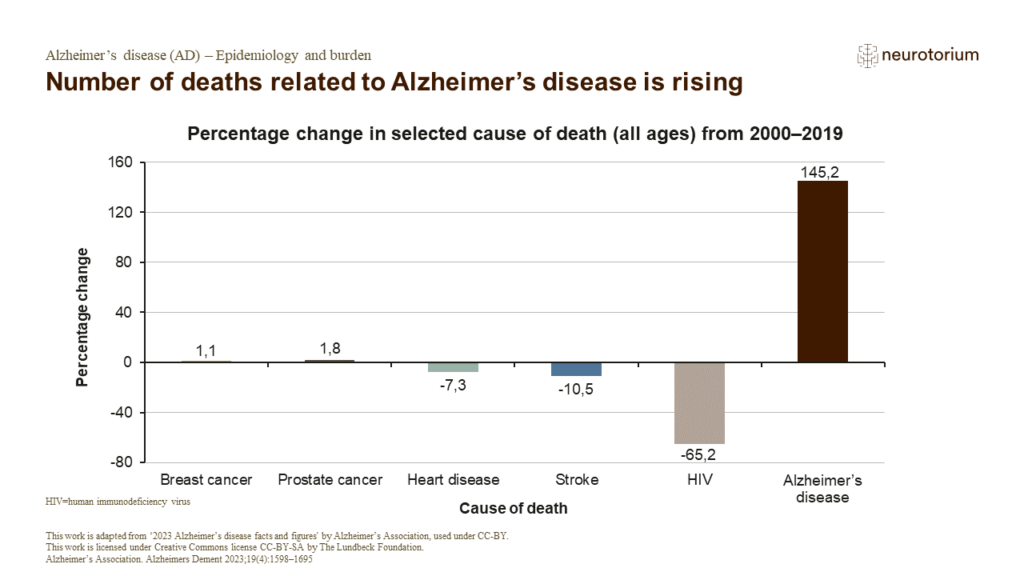
Number of deaths related to Alzheimer’s disease is rising
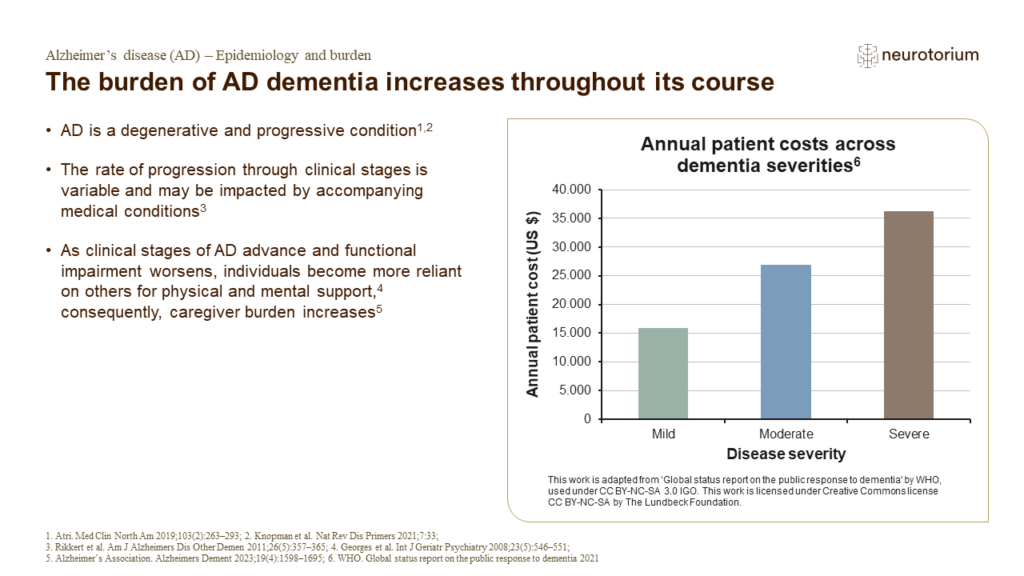
The burden of AD dementia increases throughout its course
Global function denotes the overall function of an individual and includes cognitive functions, behaviour, and ability to perform activities of daily living (ADLs).7 As AD progresses, the impact on the three domains reduces global function, and increased caregiver burden.…
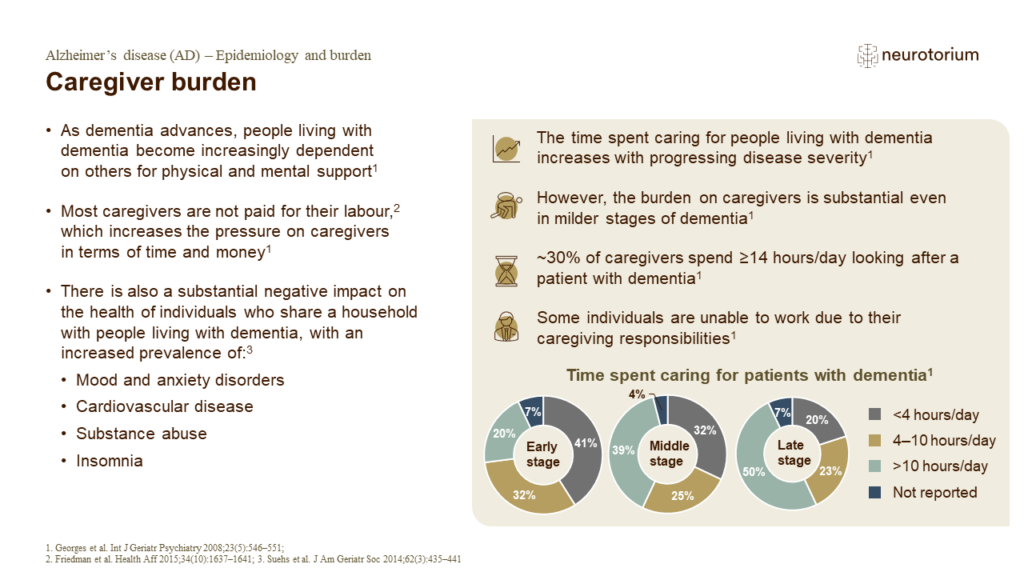
Caregiver burden
For caregivers of people living with dementia, the role involves helping the patient with acts of daily living (i.e., household chores, shopping, preparing meals, managing finances, arranging medical appointments, maintaining personal hygiene), administering medications, …
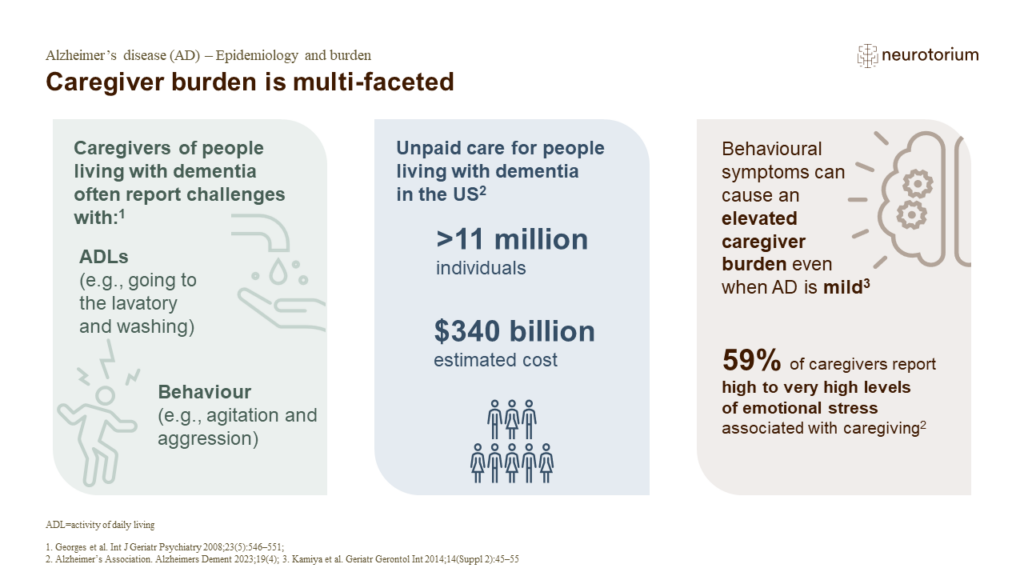
Caregiver burden is multi-faceted
As AD progresses, people living with dementia become increasingly dependent on the caregiver.2 The current healthcare system is highly reliant on informal unpaid caregivers, many of whom are also socioeconomically and medically vulnerable.4,5 As a result, family and careg…
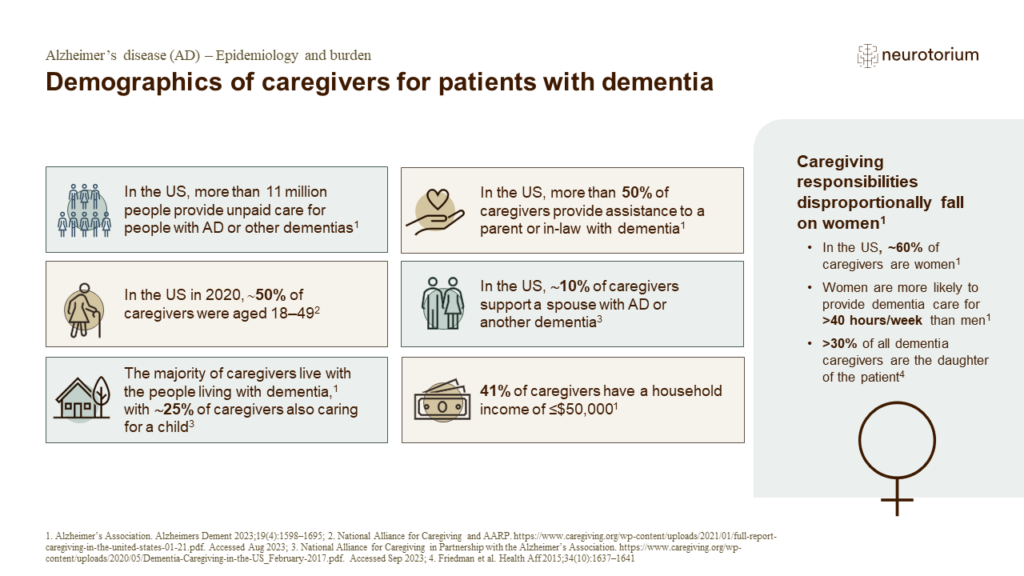
Demographics of caregivers for patients with dementia
The majority of dementia caregivers live with the patient in the community,1 with 60% of caregivers being married, living with a partner, or in a long-term relationship.1,5 Among primary caregivers of people living with dementia, more than half take care of their parents.…


